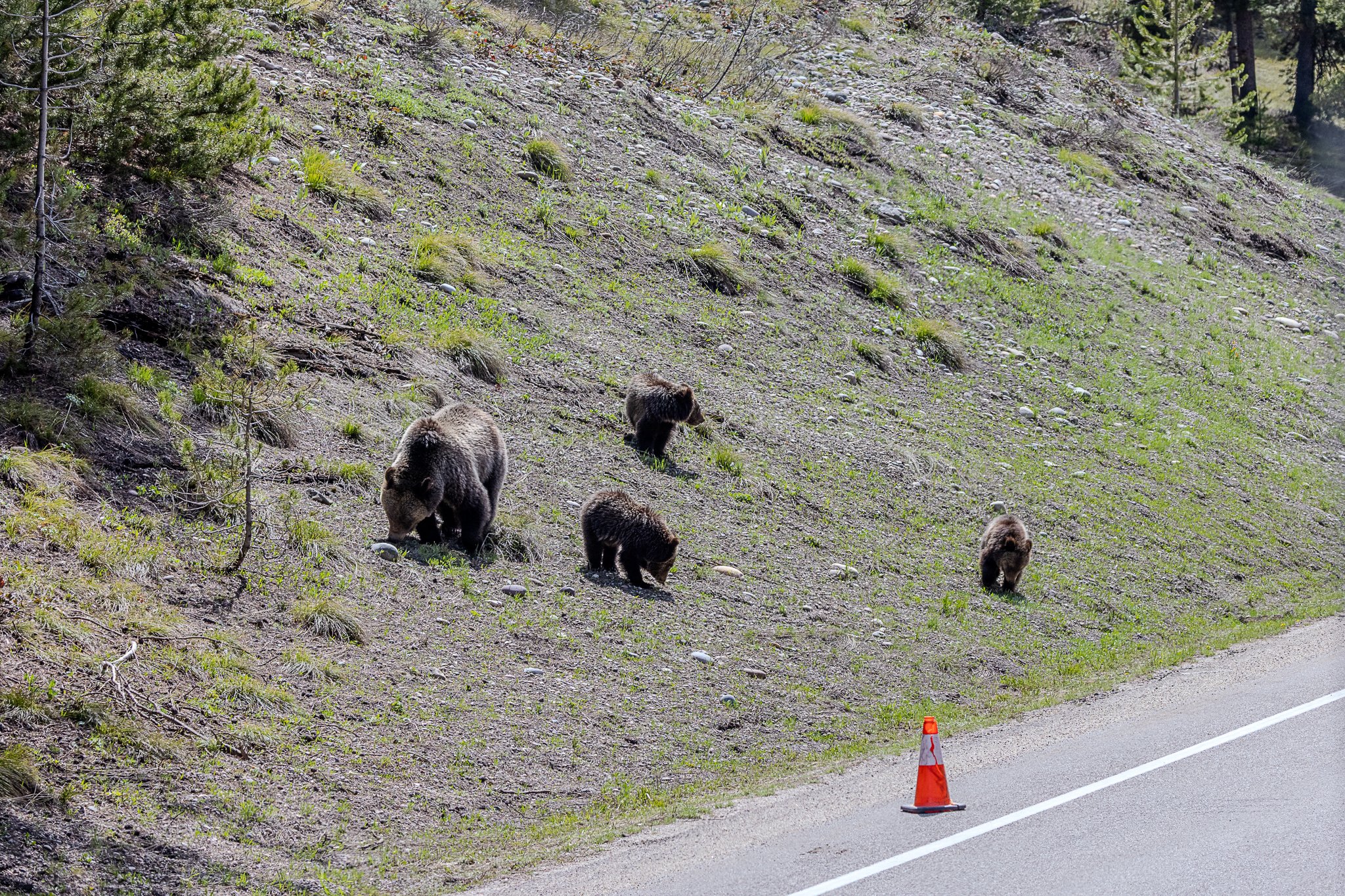Size:
The true size of grizzly bears is often exaggerated by tales of close encounters, and as we know, emotions help to shape our memories. That being said, a grizzly is nothing to shake a stick at. Many older male bears weigh in around 500 pounds, and the exceptionally big boars may weigh over 600 pounds. Females are not typically more than 350 pounds, smaller than some garbage-fed bears in suburban spaces. Upright, they stand between 8 and 10 feet tall, but on all fours, they are short enough to disappear in the sagebrush.
Diet:
Grizzly bears may have the most generalist diet of any animal on earth. Unlike their sumo-sized cousins, the coastal brown bears, who eat almost exclusively fish, a grizzly’s diet is varied from season to season and from year to year. A recent study found 266 species of plants and animals that bears fed on. They are the ultimate opportunist, and learn from new food sources quickly (something that makes them a challenge to manage). Among the most important food sources for GYE grizzly bears are: pine nuts, graminoids, ants, and dandelions.
Mating:
Bear mating is a wonder of the natural world. Evolving with the selective pressures of long, cold winters with deep snow and short, cool, dry summers, bears have been pushed to extremes to give their cubs the best shot at life. Adding further stress to their cubs, they formerly would have had to compete with nearly 100 thousand other grizzlies on the landscape. To combat these dangers, bears have evolved a promiscuous mating system, allowing a female to have multiple estrus cycles each summer and mate with a number of dominant bears, thus decreasing infanticide risks the following year. More impressively, they display a delayed implantation. Delayed implantation is where the embryo is fertilized after mating, but remains in the uterus unattached and does not develop further. Once in hibernation, physiological signals allow the embryo to implant, but leptin, a hormone associated with fat levels, mitigates this implantation. This allows fatter female bears to implant more embryos and less fat bears to implant fewer, ensuring that all members in the den have the available calories to make it through the 7 months of hibernation.
Population:
There are somewhere between 900 and 1,100 grizzly bears in the 22 million acres of the greater Yellowstone ecosystem, with smaller populations in the Cabinet-Yaak, North Cascades, and Northern Continental Divide ecosystems. (More on this below)
What is a Grizzly Bear and what is wilderness?
The symbol of the American wilderness is the grizzly bear. Unique to the inland areas of North America, the grizzly is a leaner, faster, and more aggressive subspecies compared to the coastal brown bear. They have been given the Linnaean name Ursus arctos horribilis. Roughly translated, it means the "horrible bear," a nod to its formidable nature and commanding presence in the wild.
While their name suggests an unpredictable and potentially dangerous nature, each year thousands of people impose themselves on bears being bears. These animals consistently prove to be overly gracious in the face of such disturbances. Like a child testing boundaries, hordes of humans interpret this graciousness as a signal to further intrude upon the lives of bears. It is ironic that wild bears face numerous challenges, including encounters with both unfriendly people and overly friendly ones. In this way, bears serve as a microcosm for the current state of American wilderness, caught between the pressures of human encroachment and the desire for coexistence. Their plight reflects the broader complexities of preserving wild spaces in a rapidly changing world.
The future of Grizzly bears in the Rocky Mountain West remains uncertain. Currently listed as endangered, grizzlies receive the highest level of federal protection. However, there is significant debate over whether they should be removed from the endangered species list.
Many biologists argue that grizzly populations in Idaho, Montana, and Wyoming have reached a point of “biological recovery.” Despite this, legal complexities arise when assessing if these populations meet the recovery criteria outlined in the Endangered Species Act (ESA). A critical question centers on genetic flow: are there sufficient genetic exchanges between grizzly populations across states and neighboring areas to ensure long-term viability?
Beyond legal considerations, there are moral questions about what recovery truly means. With the current U.S. population estimated at around 1,000 grizzlies, dramatically lower than the estimated 75,000 historically, is this number sufficient to declare recovery? This debate touches on how we value species restoration beyond mere numbers.
Additionally, advances in ecological science prompt us to reconsider traditional metrics. Rather than focusing solely on total population size, should emphasis be placed on the functional population? Those individuals actively contributing genes to future generations? This perspective may better reflect the true health and sustainability of grizzly populations.
Ultimately, the decision to delist the grizzly bear involves balancing biological data, legal frameworks, moral considerations, and evolving scientific understanding of population dynamics. The path forward requires careful examination to ensure the species’ long-term survival in the Rocky Mountain West.
The Yellowstone to Yukon Initiative is a visionary conservation effort aiming to create a continuous corridor spanning from Yellowstone National Park in the United States to the Yukon in Canada. This vast connected habitat allows for the natural movement and migration of wildlife species, including grizzly bears, wolves, and other large mammals, across their traditional latitudinal ranges.
By facilitating gene flow between disparate animal populations, the initiative works to maintain genetic diversity, which is crucial for the health and resilience of species. Genetic diversity helps prevent the negative impacts of inbreeding and genetic bottlenecks, which can reduce adaptability and increase vulnerability to disease and environmental changes.
This long-term project not only benefits individual species but also supports ecosystem health and stability across a large geographic area. It addresses the challenges posed by habitat fragmentation due to human development, ensuring that wildlife populations remain connected and viable well into the future. The Yellowstone to Yukon Initiative represents a comprehensive approach to conservation that balances ecological needs with responsible land use, safeguarding biodiversity for generations to come.
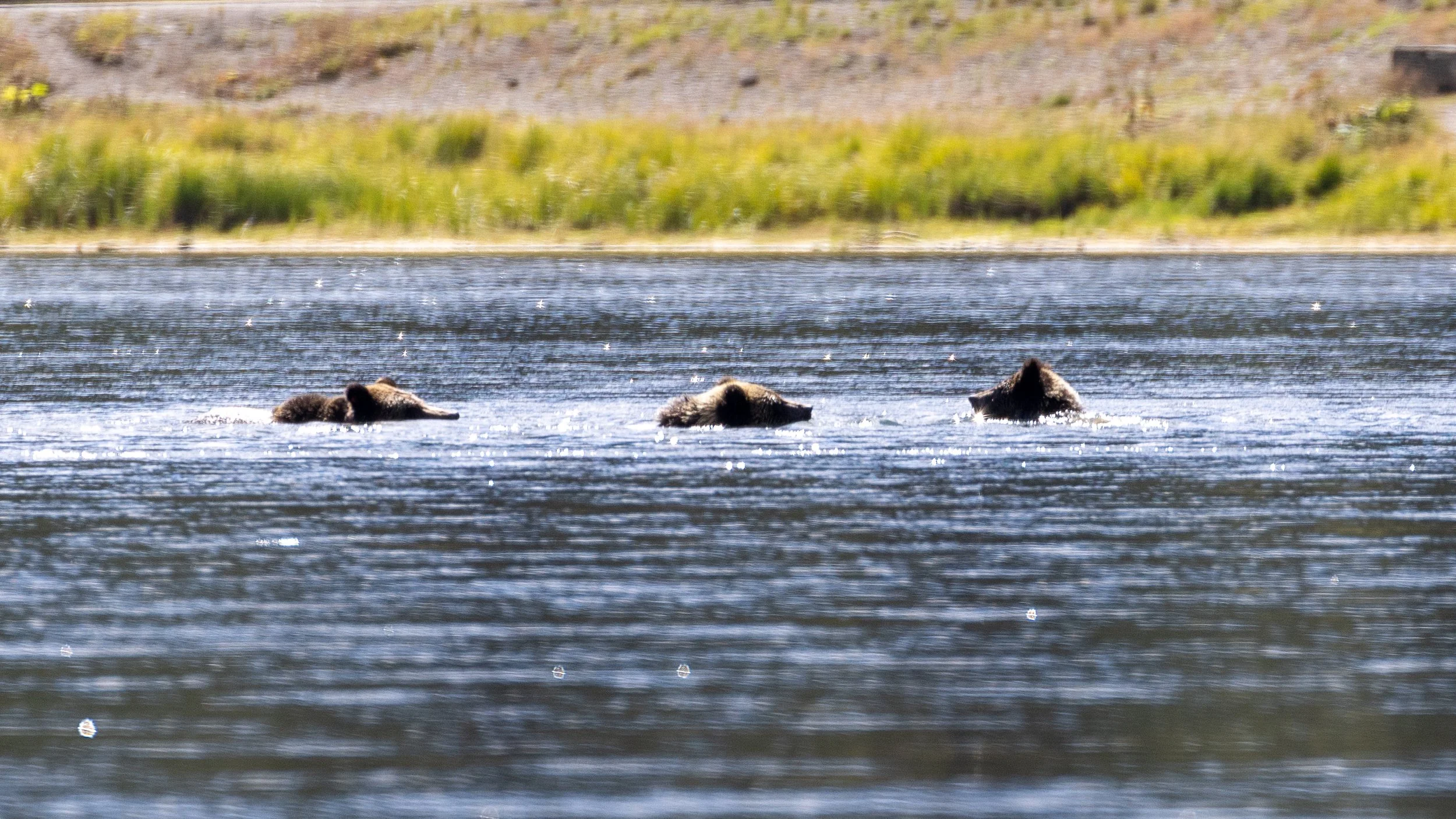


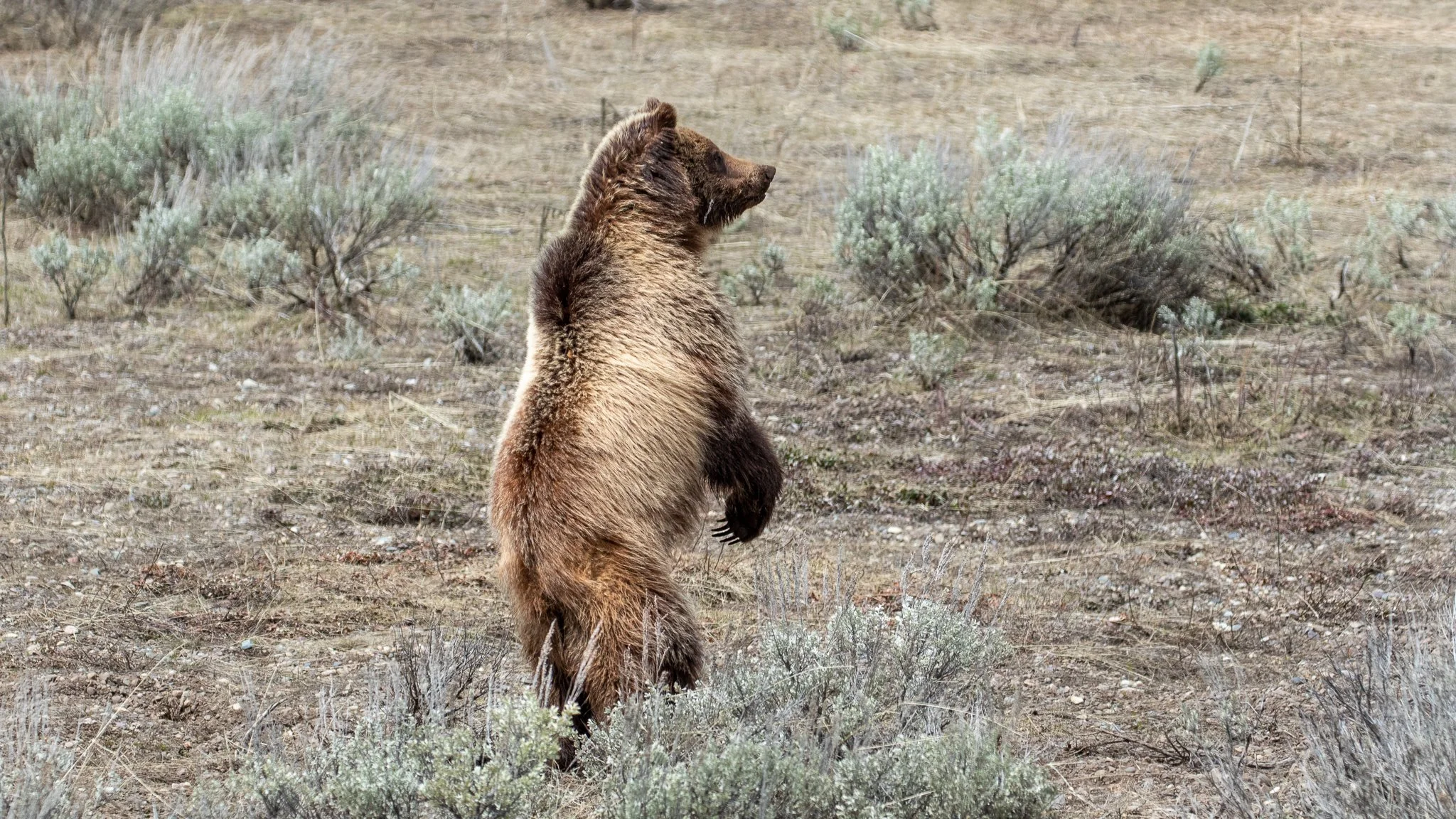
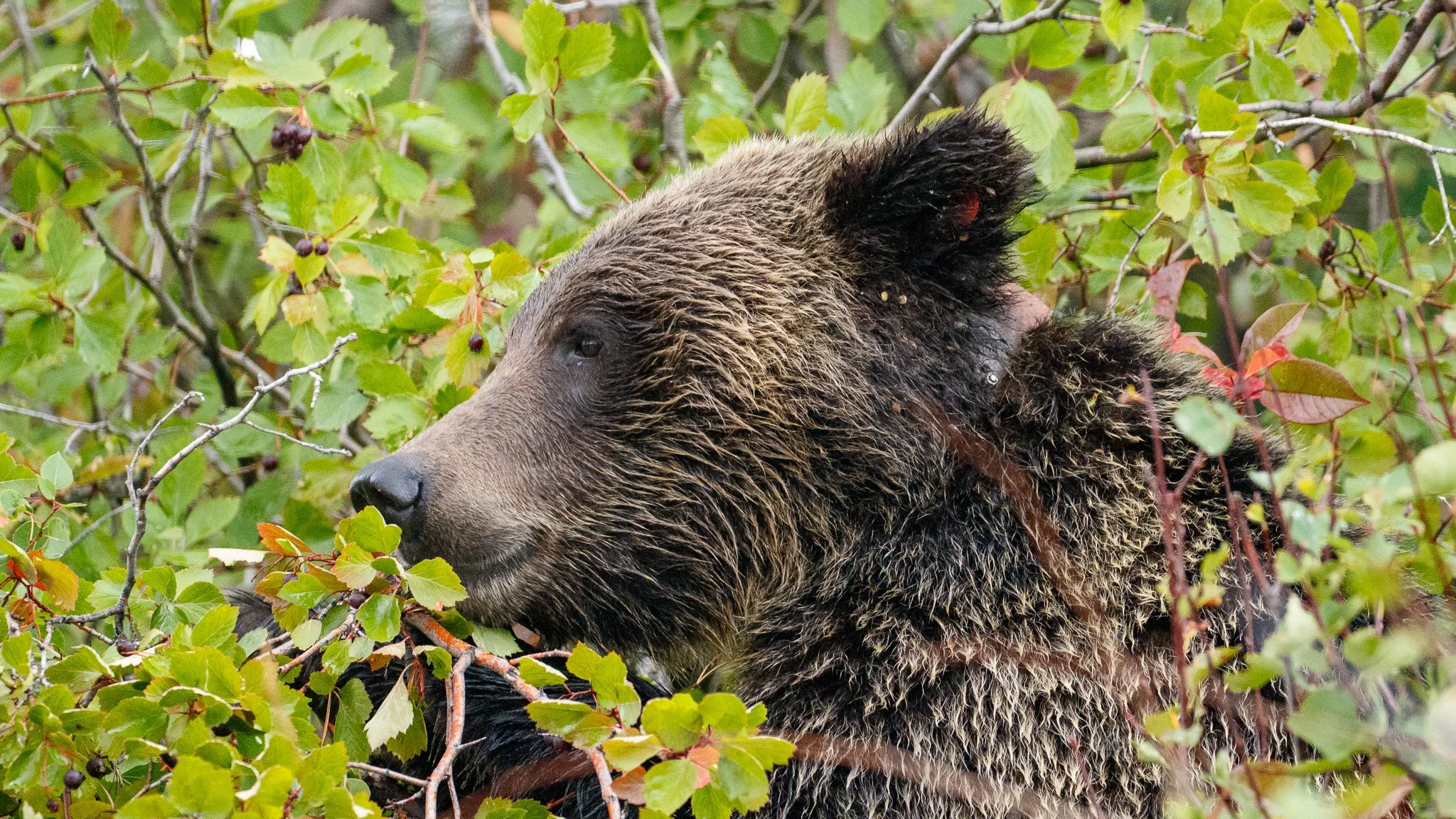


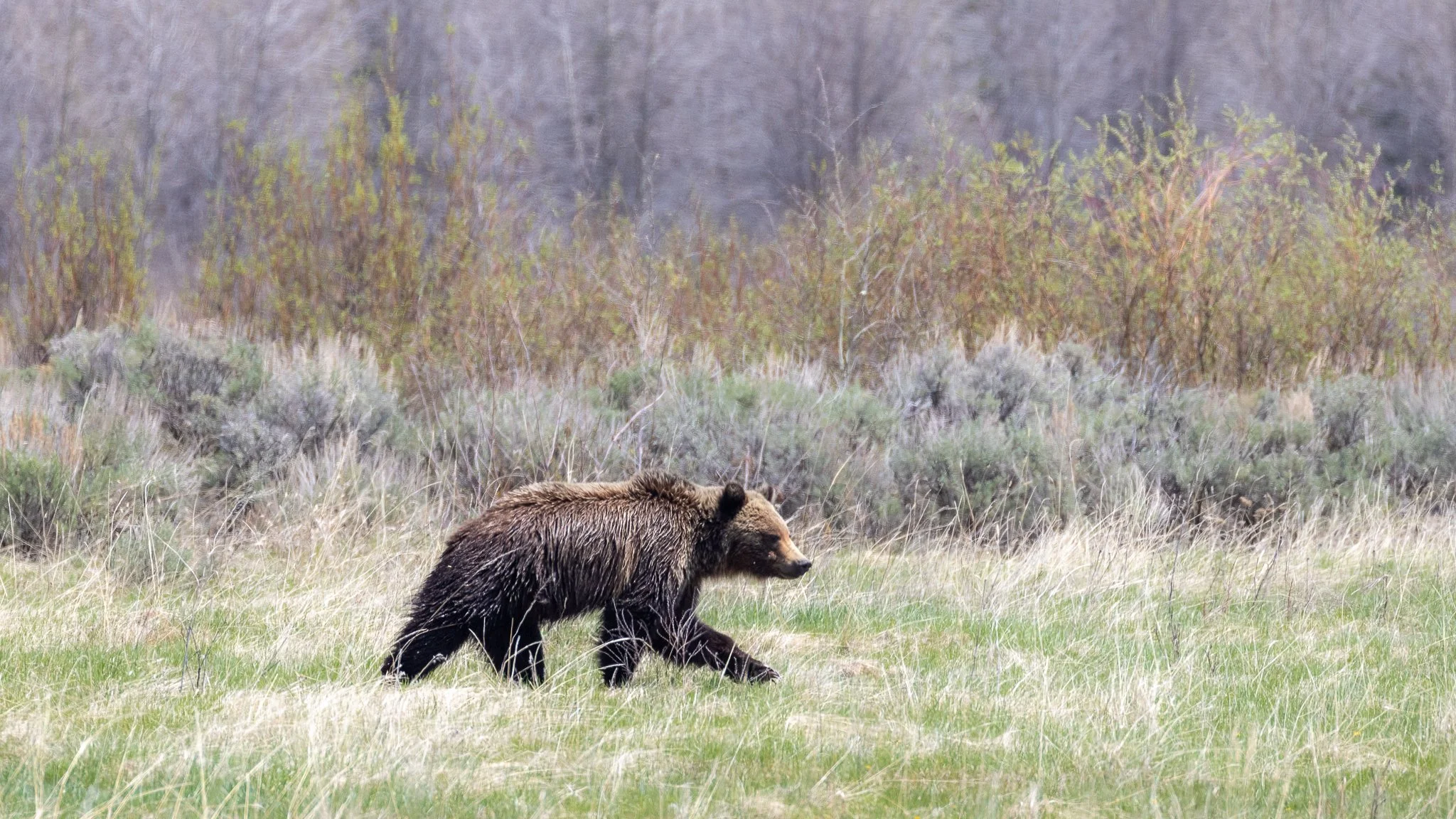
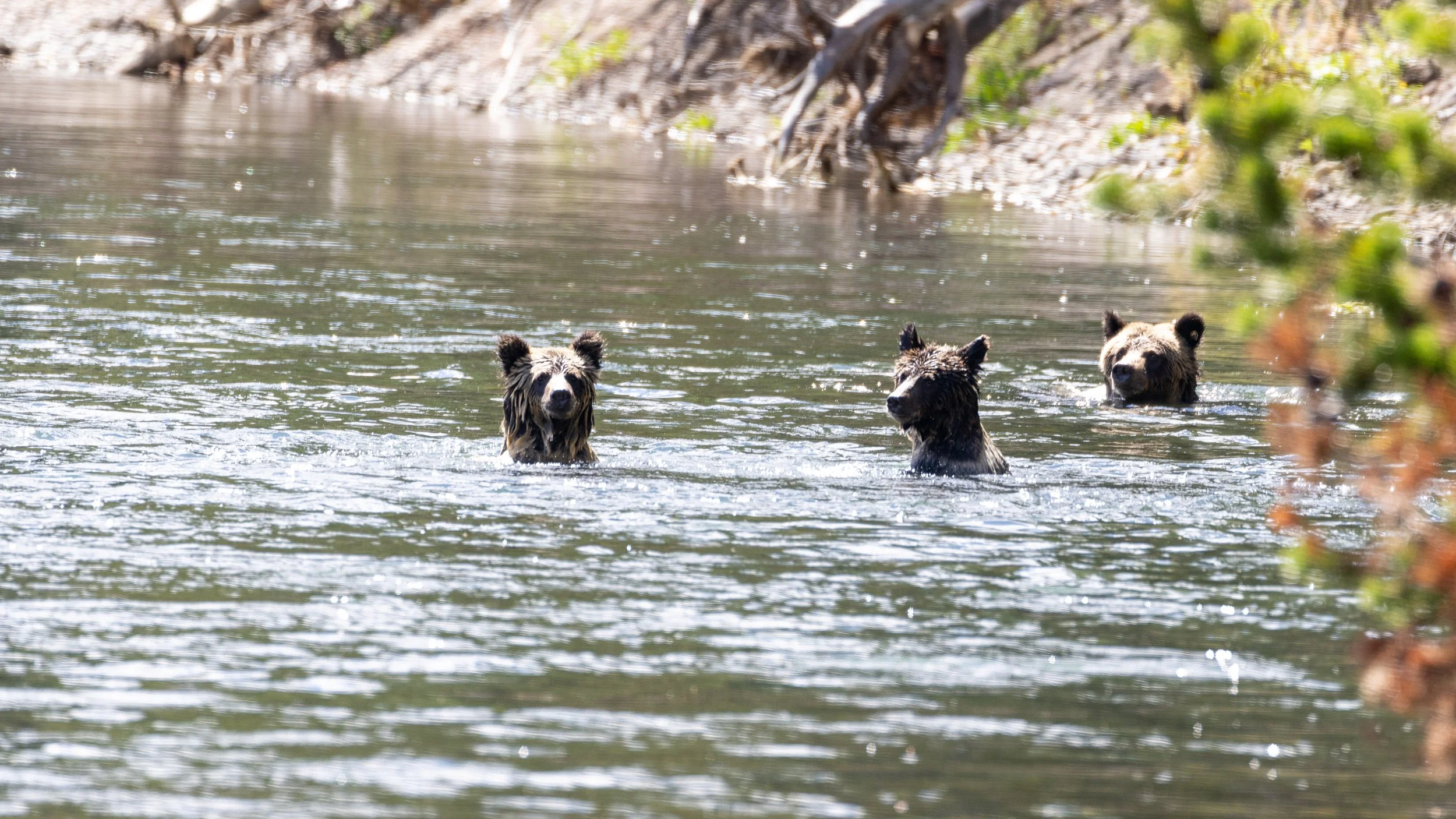

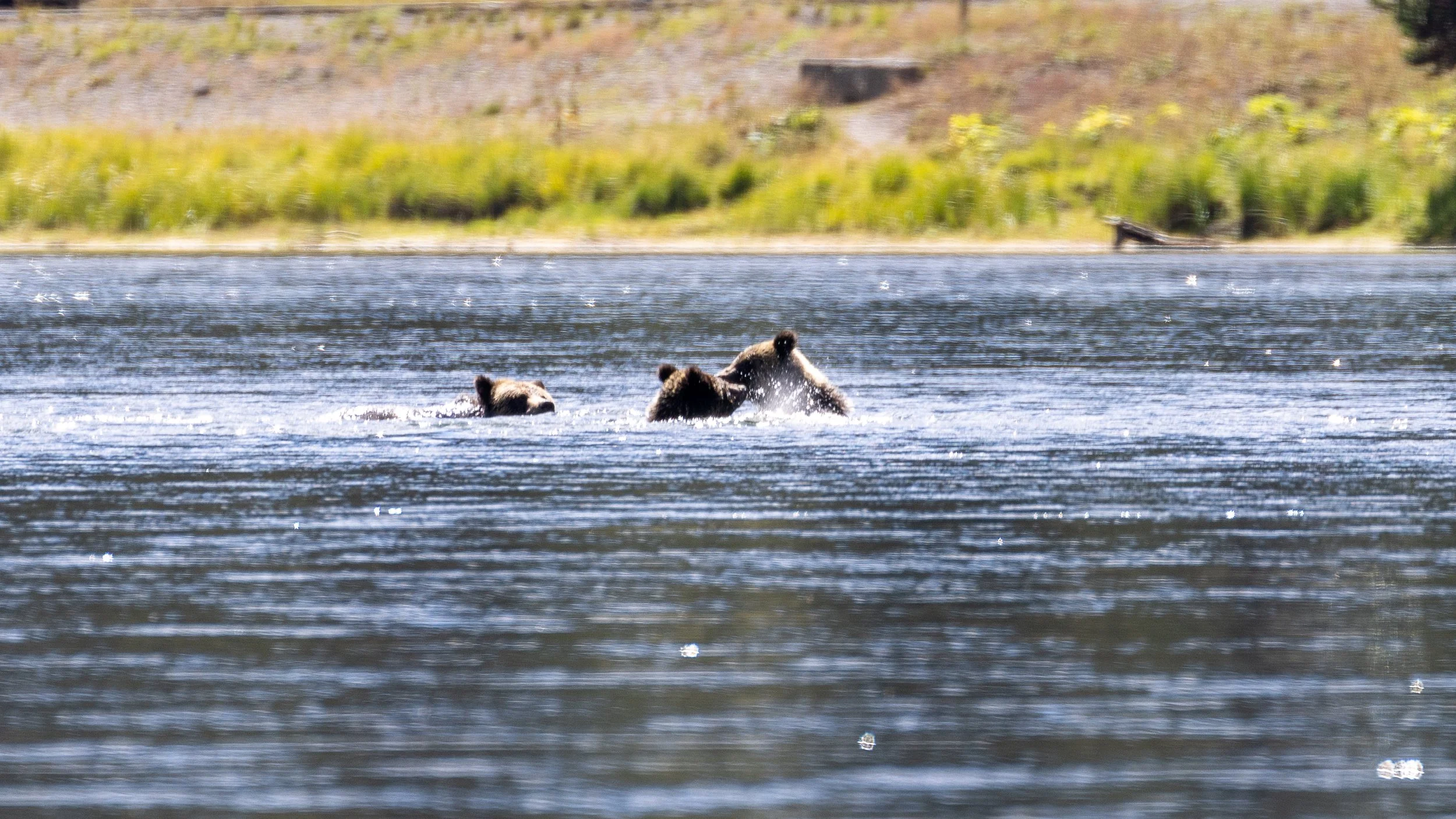
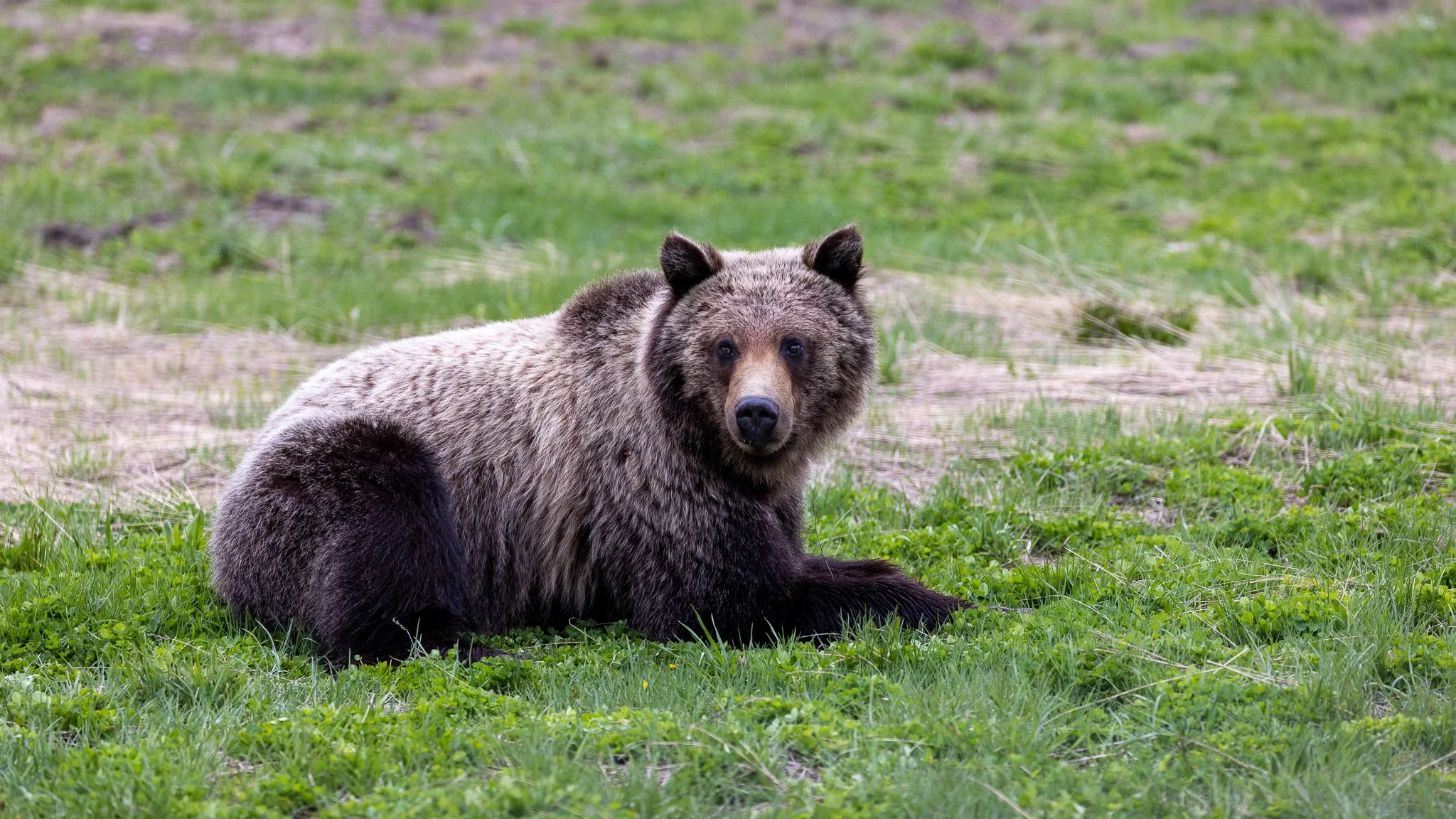

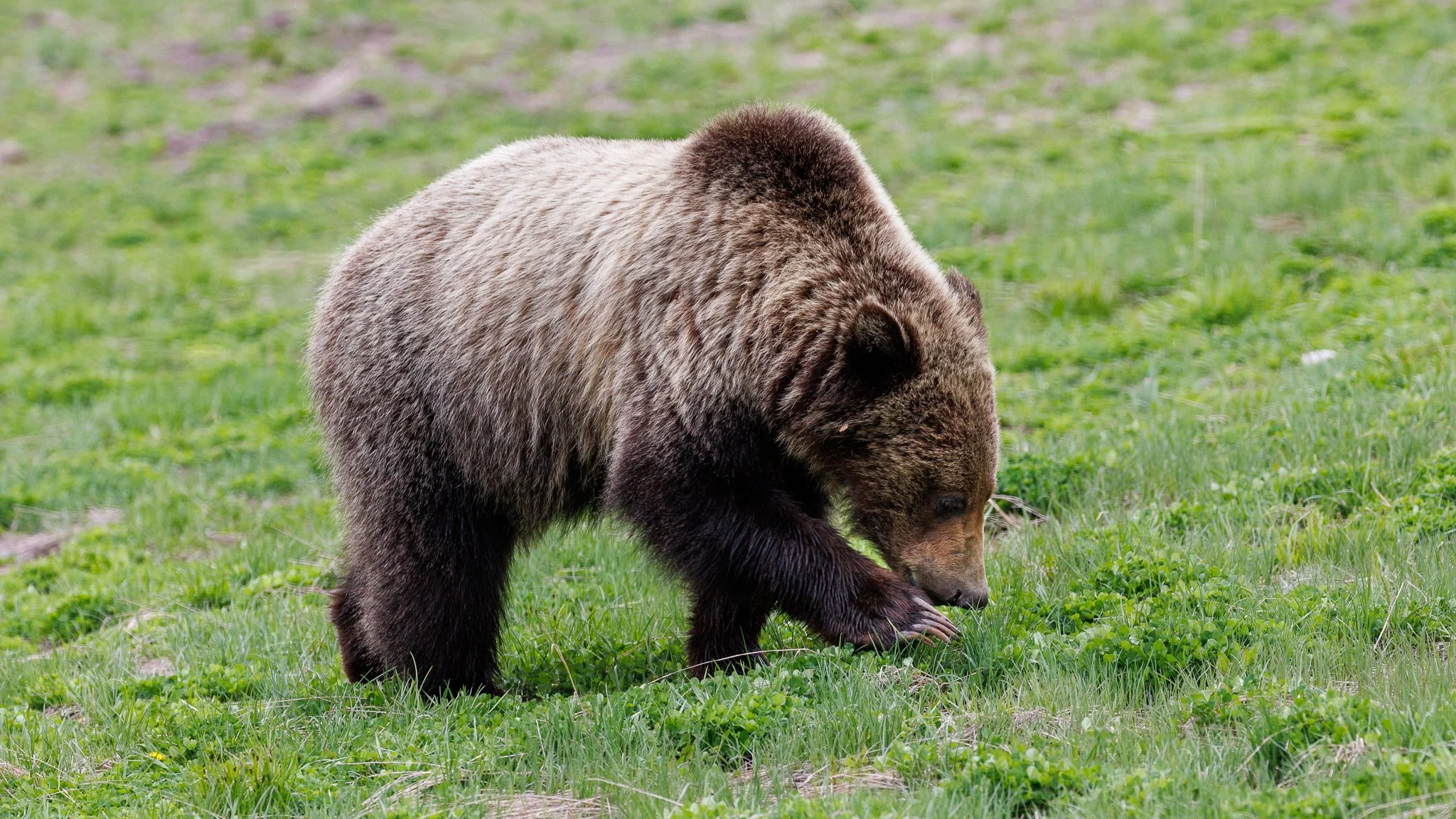

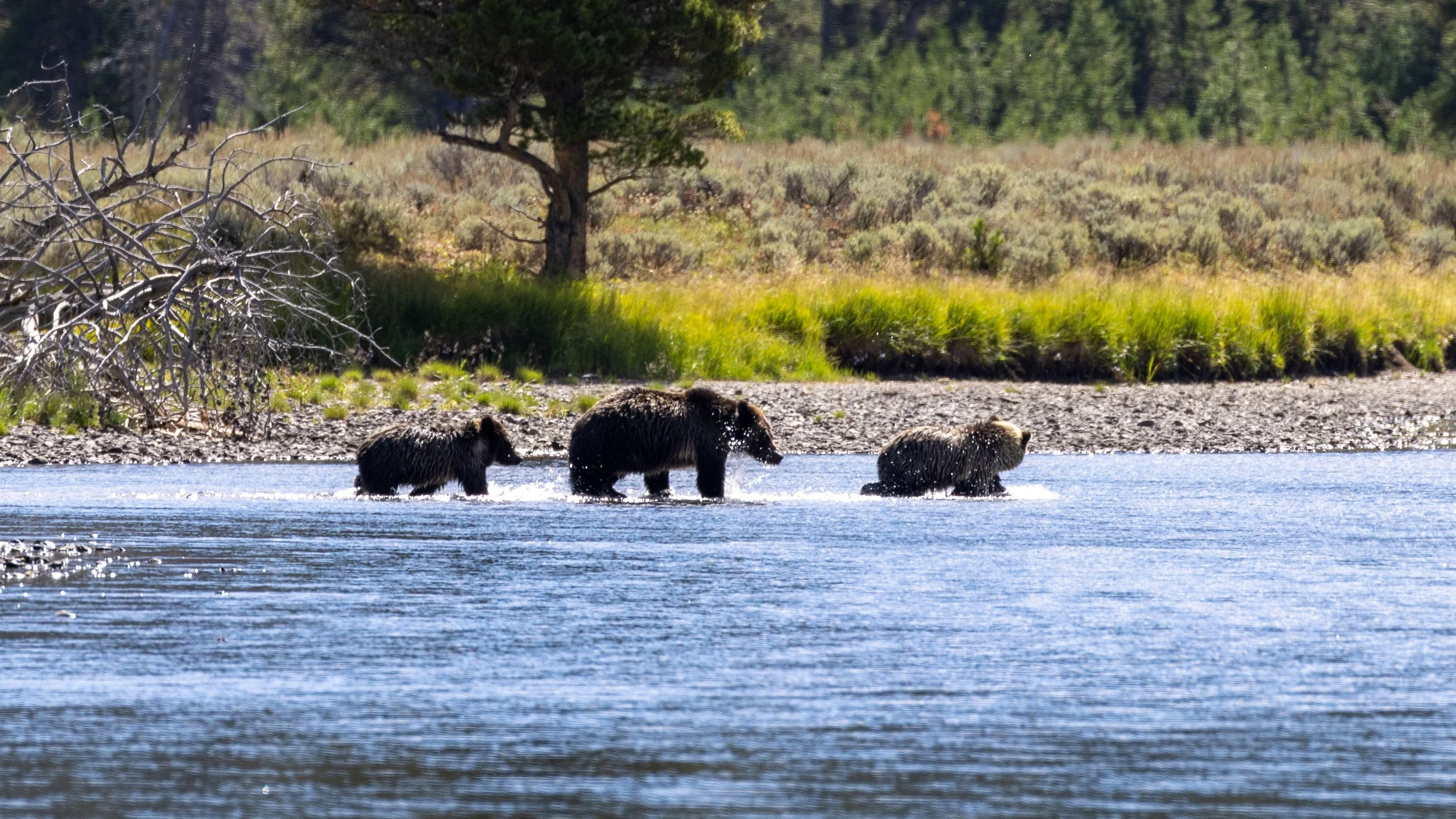


Resources:
Grizzly Confidential by
Yellowstone Grizzly Bears: Ecology and Conservation of an Icon of Wilderness by PJ White et al (2017)
